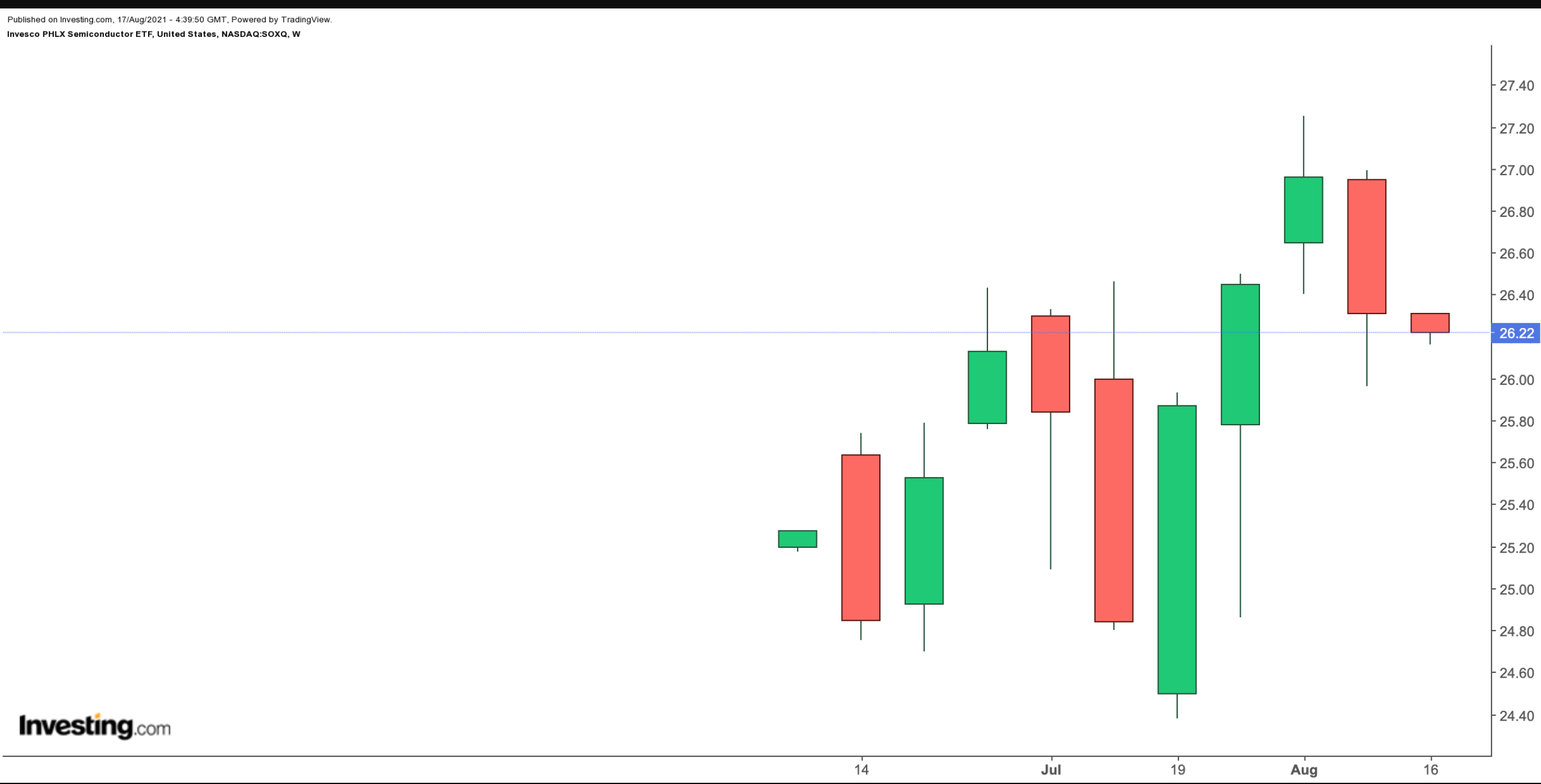Verizon to cut 15,000 jobs amid growing competition pressures - WSJ
Semiconductors, which include memory chips, microprocessors and integrated circuits are the “brains” of every kind of electronic device. Buoyed by significant demand during the pandemic, many chip shares have seen significant returns in the past year.
For instance, the widely-followed Philadelphia Semiconductor Index is up 51% in the past 12 months and 19.3% year-to-date. By comparison, the tech-heavy NASDAQ 100 index has returned 35% over the past year and 17% YTD.
Recent metrics highlight the global semiconductor market “is projected to grow from $452.25 billion in 2021 to $803.15 billion in 2028 at a CAGR of 8.6% in forecast period, 2021-2028.”
Industry analysts concur the chip sector will continue to benefit from developments and increased demand from smartphones, laptops, household products, cloud computing, the automotive sector, including electrics vehicles, as well as 5G infrastructure.
Chip Shortages Continue
Given the strength of demand in the industry, we can expect many semiconductor stocks to do well in the long term. Yet, the industry is also highly cyclical, affected by periodic ups and downs due to demand and supply levels.
Therefore, contrarian investors would potentially say caution is warranted in the sector as market dynamics can change rapidly. For example, headlines regarding chip shortages have dominated tech news in much of 2021.
According to Susquehanna Financial Group:
“Microcontrollers that control functions in vehicles, home electronics and industrial equipment, now have lead times of 26.5 weeks. The average wait time for logic chips like these is six to nine weeks.”
The current chip shortage affects industries and companies in different ways. Semiconductor suppliers have seen strong demand for their products. And supply chain constraints are likely to continue in the months ahead, according to Lisa Su, CEO of leading chip manufacturer Advanced Micro Devices (NASDAQ:AMD).
The current global shortage is affecting global manufacturers adversely as well, including car makers. For example, General Motors (NYSE:GM) has interrupted some production during the year. And GM is not the only car manufacturer to say that disruptions are hitting production and sales.
With that information, here are two exchange-traded funds (ETFs) that could appeal to readers who are bullish on the chip sector in the months ahead.
1. SPDR S&P Semiconductors
Current Price: $193.84
52-Week Range: $116.21 - $203.60
Dividend Yield: 0.14%
Expense Ratio: 0.35%
The SPDR® S&P Semiconductor ETF (NYSE:XSD) provides exposure to semiconductor companies of different market capitalization. The fund started trading in January 2006, and net assets stand at around $1 billion.

XSD, which has 41 holdings, tracks the S&P Semiconductors Select Industry, a modified equal-weighted index. The top 10 names make up about 30% of net assets, which means the fund avoids being too top-heavy and offers investors a wide-ranging industry exposure.
Leading names in the roster include the provider of silicon timing systems Sitime (NASDAQ:SITM); Monolithic Power Systems (NASDAQ:MPWR), which manufactures power management products; Advanced Micro Devices; Maxlinear (NYSE:MXL), which designs radio-frequency and mixed-signal semiconductor products; and provider of photovoltaic solar solutions First Solar (NASDAQ:FSLR).
The fund returned 55% in the past year, and hit a record high in February. Those readers who believe that chip names have strong pricing power in the current period when demand is outstripping supply could consider buying the dips in XSD. We like the diversified nature of the ETF.
2. Invesco PHLX Semiconductor ETF
Current Price: $26.22
52-Week Range: $24.38 - $27.25
Expense Ratio: N/A until Dec 17., 2021
The Invesco PHLX Semiconductor ETF (NASDAQ:SOXQ) invests in firms that design, distribute, manufacture and sell semiconductors. The fund started trading in June 2021, and net assets stand at $58.4 million. Since this is a new fund, the fund adviser has waived the fees of 0.19% until Dec. 17, 2021.

SOXQ, which tracks the returns of the PHLX Semiconductor Sector Index, currently has 30 holdings. The top 10 stocks comprise more than 60% of the fund.
The top names include NVIDIA (NASDAQ:NVDA), Qualcomm (NASDAQ:QCOM), Broadcom (NASDAQ:AVGO), Texas Instruments (NASDAQ:TXN), Intel (NASDAQ:INTC), Advanced Micro Devices, Marvell Technology (NASDAQ:MRVL), KLA-Tencor Corporation (NASDAQ:KLAC) and Analog Devices (NASDAQ:ADI).
Since its inception in June, the fund is up about 5%. Investors who find the chip sector in a sweet spot might consider researching SOXQ further.
